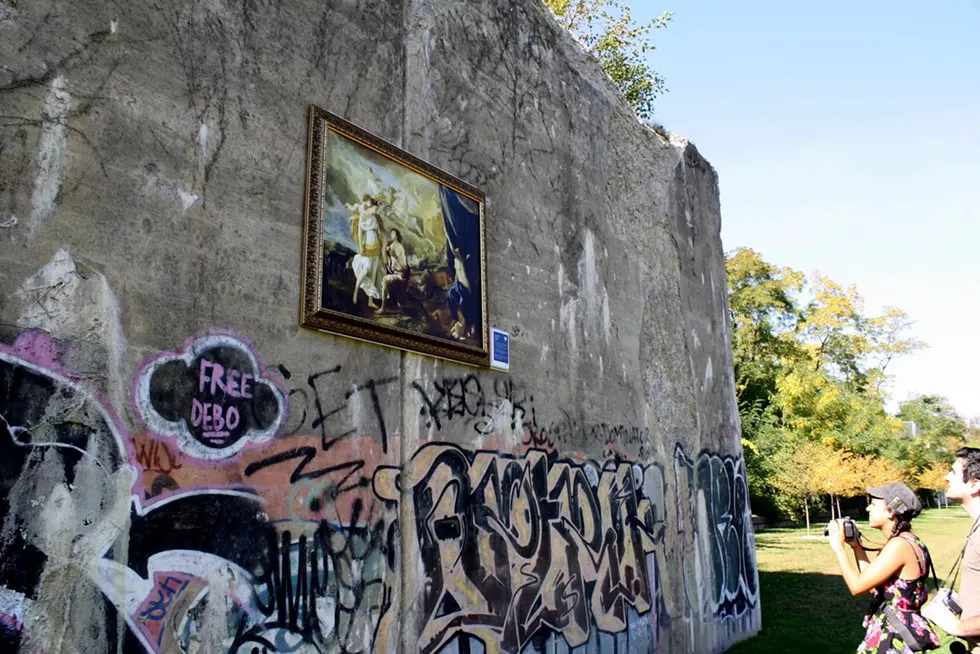Triumph: The Dequindre Cut
On May 24, 1836, Antoine Dequindre granted the Detroit & Pontiac Railroad Company a 40-foot strip of land on the eastern border of his riverfront farm for the purpose of laying track, and this strip of land would be called Dequindre Street. Safety concerns forced the Grand Trunk Railroad, successor to the Detroit & Pontiac Railroad, to dig down and lower their right-of-way beginning in 1927. When the line was discontinued in the 1980s, the corridor attracted urban explorers and graffiti artists. MGM Grand Casino bought part of the line in 1999 for a freeway to a proposed casino district, but the project fell through and the city of Detroit acquired the land.
In December 2002, Mayor Kwame Kilpatrick unveiled plans to transform the Dequindre Cut into a recreational biking and running trail, connecting Eastern Market to the Detroit River. The Dequindre Cut opened in May 2007, with graffiti murals left intact. One unintended benefit of this project is that it preserves a right-of-way formerly occupied by a commuter rail that, until 1982, ran between the Renaissance Center and Pontiac, with stops in Ferndale, Royal Oak, and Birmingham. Perhaps this line will run again.
Paul Sewick operates Detroit Urbanism, a blog about the history of city roads, borders, and infrastructure. He also contributes to Curbed Detroit.
Stay on top of Detroit news and views. Sign up for our weekly issue newsletter delivered each Wednesday.







